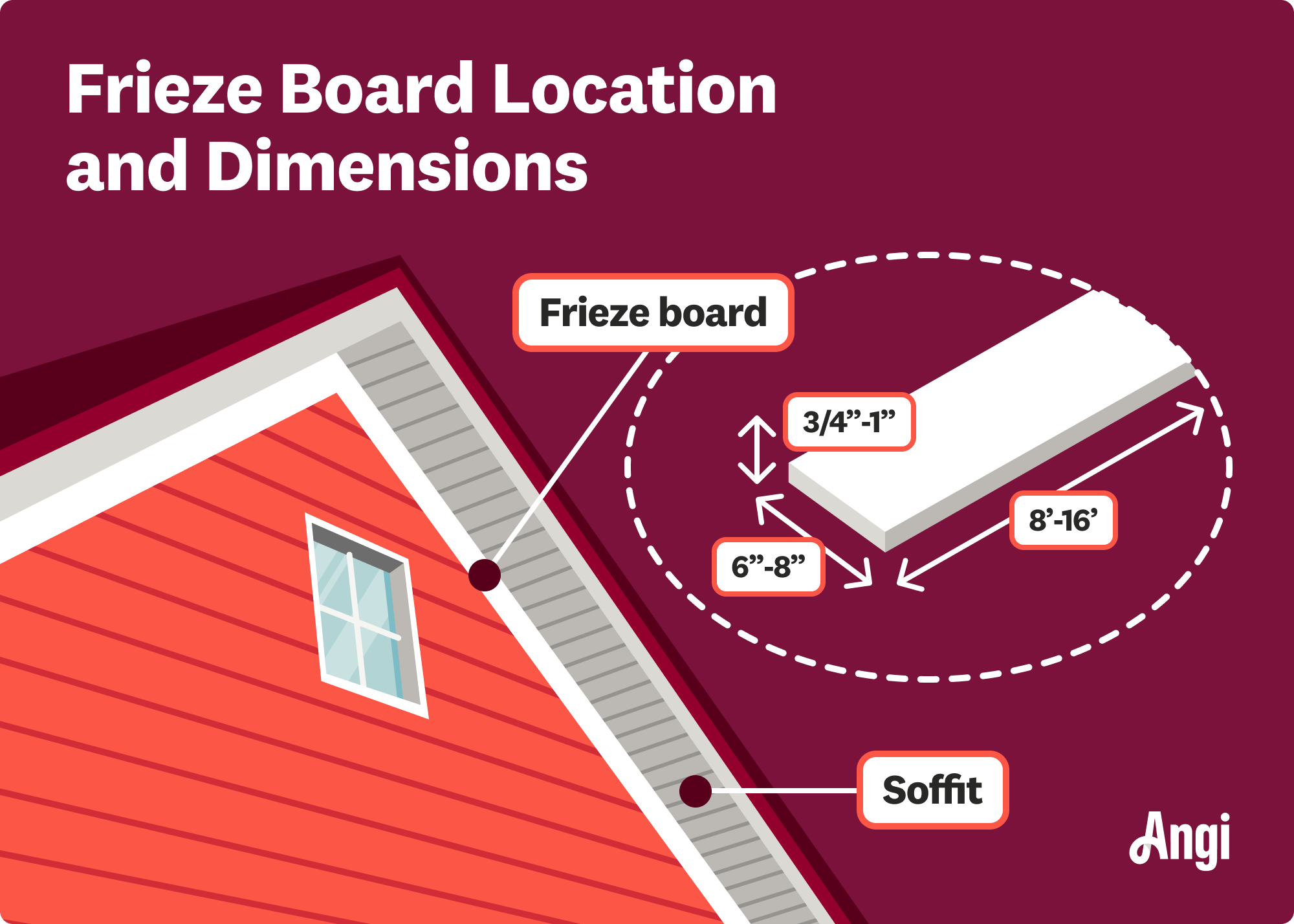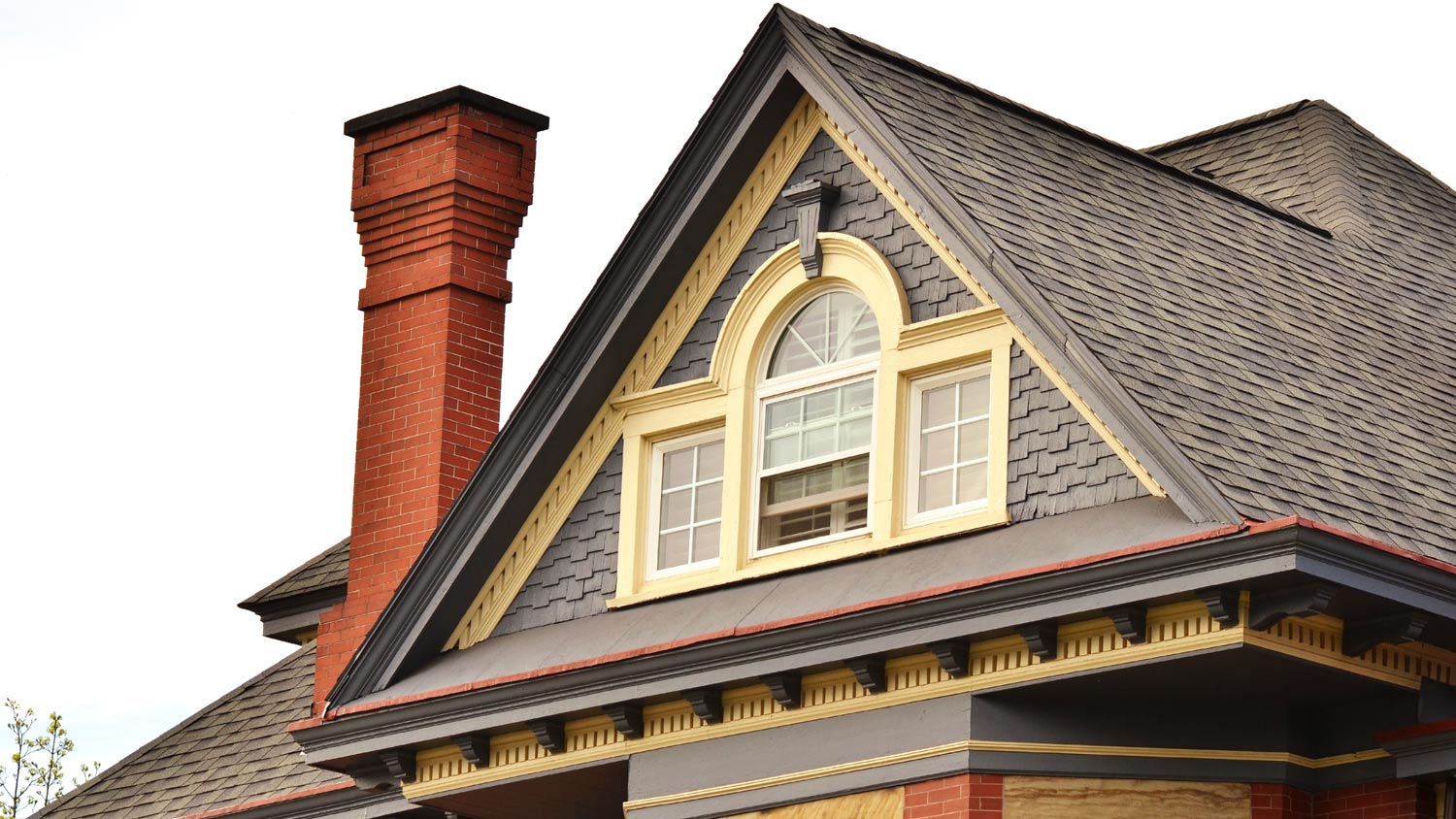
How much does engineered wood siding cost? You’ll spend anywhere from $4 to $13 per square foot, depending on a few different factors.
Frieze – Here’s what size board you need


Standard frieze boards are 6 to 8 inches in width and 8 to 16 feet in length.
Frieze board depth ranges from ¾ inch to 1 inch.
Accurate frieze board size is important for functional and aesthetic purposes.
Frieze board size greatly depends on soffit and house size, so consult a siding professional for accurate dimensions.
The frieze board is a small, decorative detail that makes a huge impact on the aesthetic of a home. Choosing the right frieze board dimensions can protect your home while also boosting its curb appeal. However, the wrong size can cause major functional and aesthetic issues. Read on for everything you need to know about frieze board dimensions and how to choose the right one for your home.

Since houses come in a variety of sizes and styles, frieze board dimensions can vary quite a bit. However, you’ll find that most frieze boards have a width of 6 to 8 inches and thickness of about ¾ to 1 inch. Standard frieze board lengths are 8, 10, 12, 14, and 16 feet.

Not all frieze boards were created equal—in size, style, or material. This means you have no shortage of options when picking out the right type of frieze board to adorn your home. Let’s consider how the type of frieze board you choose might affect dimensions.
| Type of Frieze Board | Average Dimensions in Inches | Average Length in Feet |
|---|---|---|
| Composite | 1x6–1x12 | 12–16 |
| Engineered Wood | 1x4–1x12 | 12–16 |
| Vinyl | 1x6–1x12 | 12–16 |
| Wood | 1x4–1x12 | 12–16 |
| Polyurethane | 1x4–1x12 | 12–16 |
Made from wood, fibers, plastic, or fiber cement, composite frieze boards come in several sizes. You can expect to find composite boards that range in size from 1-by-6 inches to 1-by-12 inches. While this material costs a bit more, it’s a durable choice.
True to its name, frieze boards made from engineered wood are made with a wood-like material. Engineered wood boards come in sizes ranging from 1-by-4 inches to 1-by-12 inches. This type of board is budget-friendly, durable, and visually appealing.
Vinyl frieze boards come in sizes ranging from 1-by-6 inches to 1-by-12 inches. Also known as PVC frieze boards, vinyl is made from polyvinyl chloride and is extremely easy to maintain. However, vinyl boards also cost more and look artificial in appearance.
Frieze boards made of natural wood are timeless in appearance while also available in several sizes. You’ll find wooden boards ranging from 1-by-4 inches to 1-by-12 inches. However, wooden frieze boards are more expensive and require more maintenance.
Polyurethane frieze boards are made of foam that is very dense and flexible. While this material costs a bit more, it’s extremely durable and damage-resistant. Polyurethane boards range from 1-by-4 inches to 1-by-12 inches in size.
In order to select the correct size frieze board from your home, it’s vital that you take measurements. You’ll need to collect measures near the roof of your home. Unless you’re highly experienced with working on the roof, it’s best to hire a local siding contractor to help.
Measure the width: You can determine width by measuring from the top of your siding to the bottom of your soffit. These measurements will indicate the appropriate height for the frieze board.
Measure the length: Locate the wall where you’ll be installing your frieze board and measure its length. In some cases, your wall may be greater in length than standard board sizes. If so, it may be necessary to combine frieze boards.
Check measurements for accuracy: Inaccurate measurements can result in choosing the wrong size frieze board. So, measure twice to ensure accuracy.
Purchase the closest size: Lastly, use your measurements to buy frieze boards that are closest in size. If you need help, your professional siding contractor can assist you.
There are several factors that influence frieze board size, each of which should be considered when choosing the right one for your home.
The soffit is located under the part of your roof overhang, connecting the exterior wall to the roof’s edge. Frieze boards are positioned horizontally between the siding and the soffit. That’s why you’ll need a frieze board size that complements the size of your soffit, both functionally and aesthetically.
Depending on the size of your soffit, you may need a wider or larger frieze board. Make sure your frieze board doesn’t cover any soffit vents to avoid blocking ventilation.
The architectural style of your home may also influence the size frieze board you need. Traditional or colonial home styles may call for a wider board, while modern architectural styles sport narrower boards to achieve a minimalist look.
When choosing your frieze board size, be mindful of the size of your home. If you have a smaller home, larger frieze boards may add unnecessary visual weight and make your home look disproportionate. Larger homes are often the ideal choice for using larger frieze boards, as they can bring symmetry and grandeur.
Frieze boards don’t just serve a functional purpose; they can either make or break the exterior appearance of your home. The size frieze board you choose can drastically affect your desired look. For example, a larger frieze board can catch the attention of onlookers and draw attention away from other parts of your home’s exterior. On the other hand, a smaller board can blend in and be a tasteful part of a cohesive look.
While using the wrong size frieze board for your home might seem inconsequential, it can lead to significant issues. Frieze boards protect your home from water damage while also keeping pests out. For this reason, if your boards aren’t wide enough, gaps of space can invite moisture and pests inside your home. Furthermore, the wrong size frieze board can be aesthetically unappealing and detract from your home’s overall appearance.
If you mismeasure or mistakenly grab the wrong size frieze board, there may be a way to avoid another trip to the hardware store. If your board is too wide, you may be able to cut it down to the correct size.
From average costs to expert advice, get all the answers you need to get your job done.

How much does engineered wood siding cost? You’ll spend anywhere from $4 to $13 per square foot, depending on a few different factors.

Concrete log siding costs more than traditional wood but requires less maintenance. Learn about pricing and upkeep costs to see if it’s a fit for your home.

Not sure how much vinyl siding costs? To prepare your budget for an upcoming siding project, read on to learn about average supply and labor costs.

Not sure you want to go with the standard siding material for your home? Learn about vinyl siding pros and cons to see if there’s a better option.

By evaluating the pros and cons of fiber cement siding, homeowners can make informed decisions about enhancing their homes' exteriors.

It's the age-old siding debate: to caulk or not to caulk Hardie Board. In most cases, Hardie Board discourages caulk use, but it's important to see the whole picture.